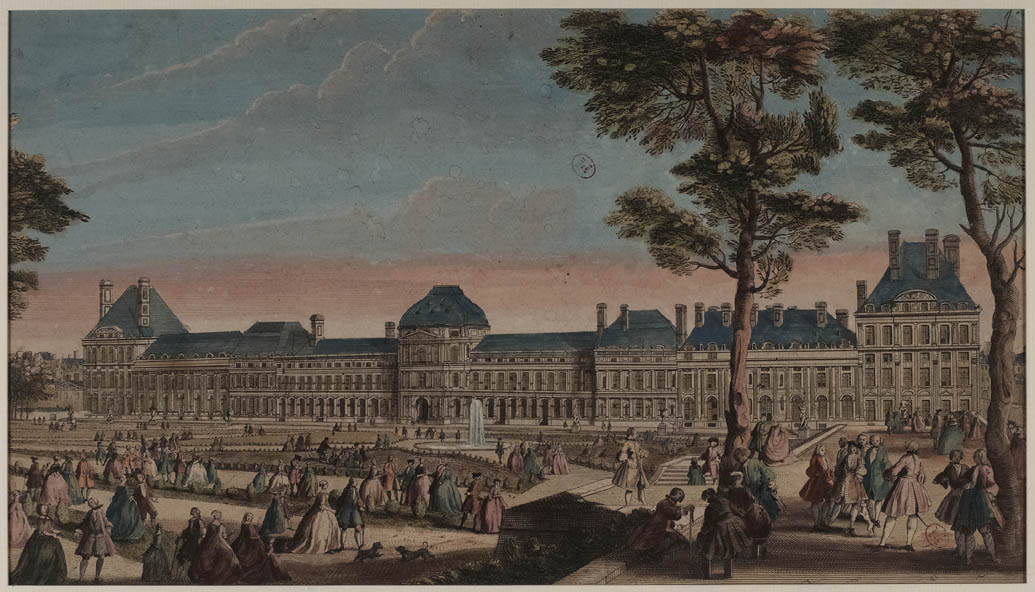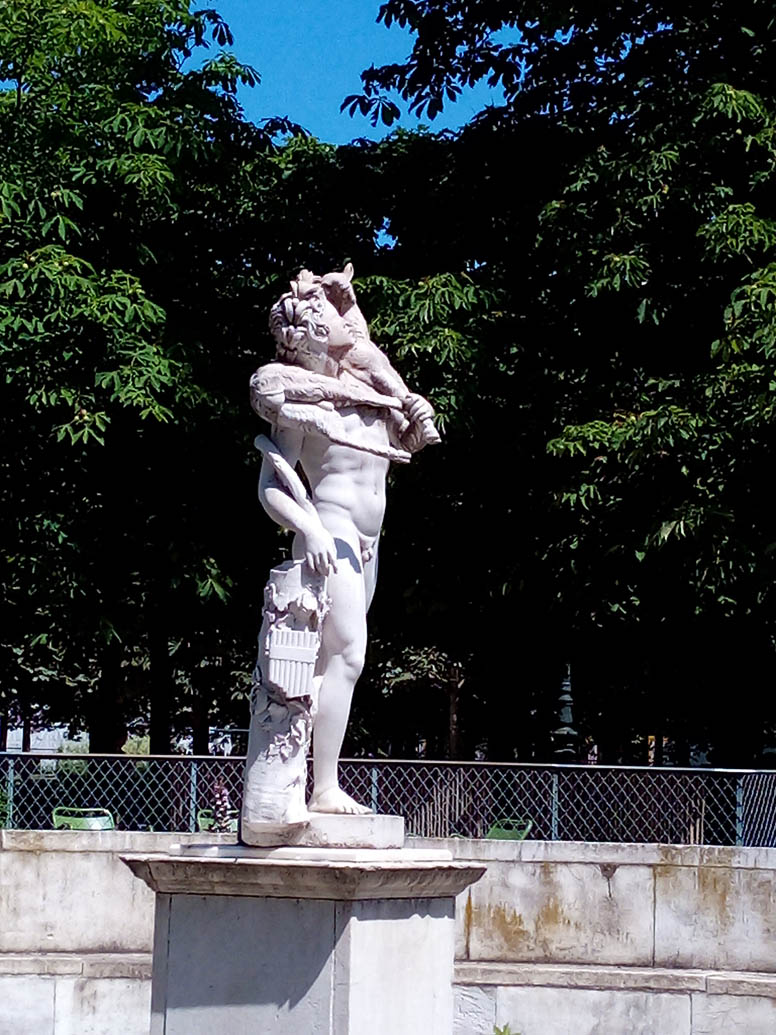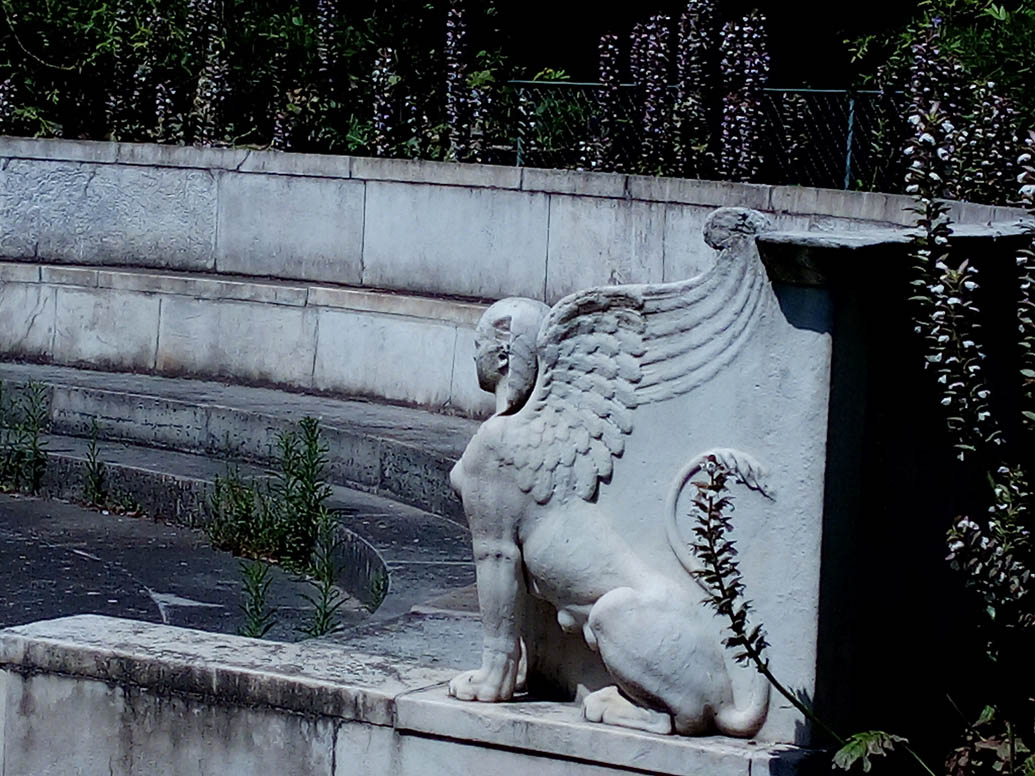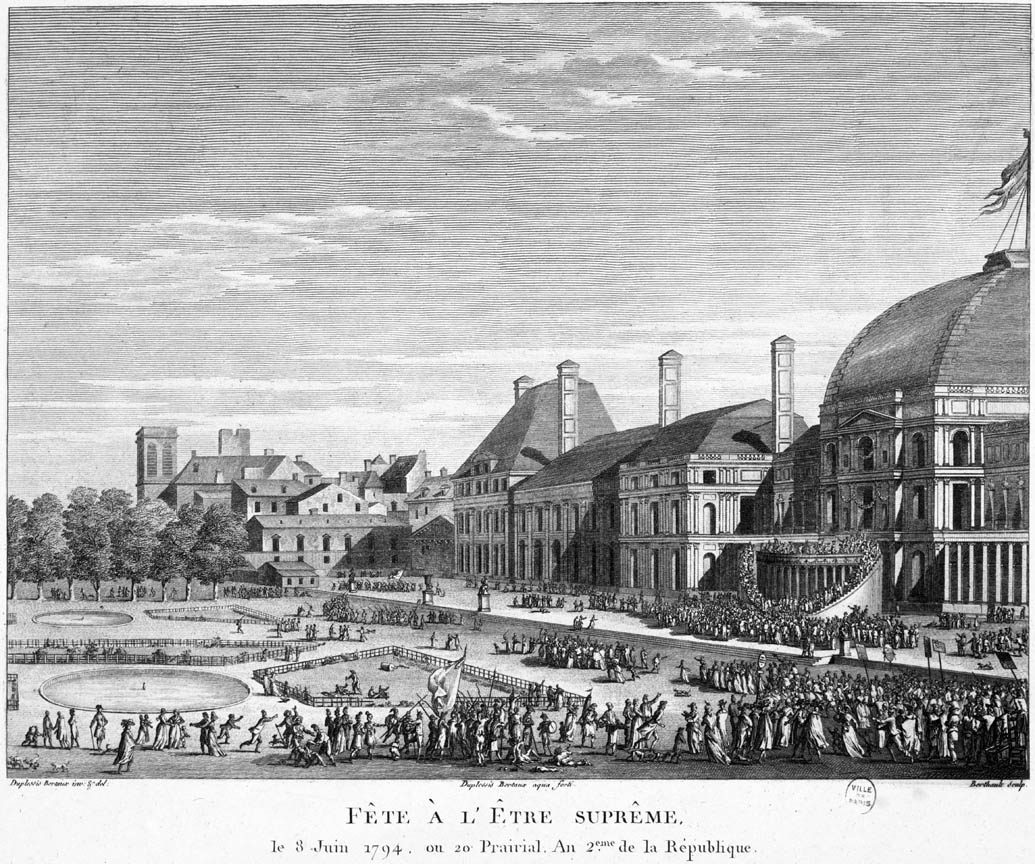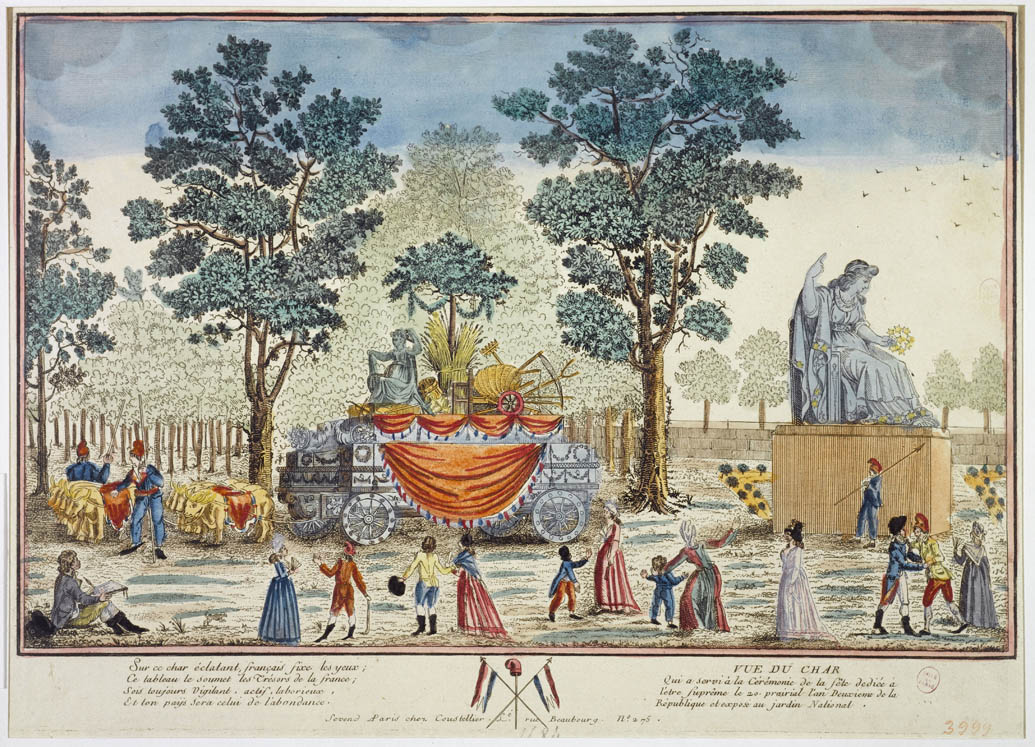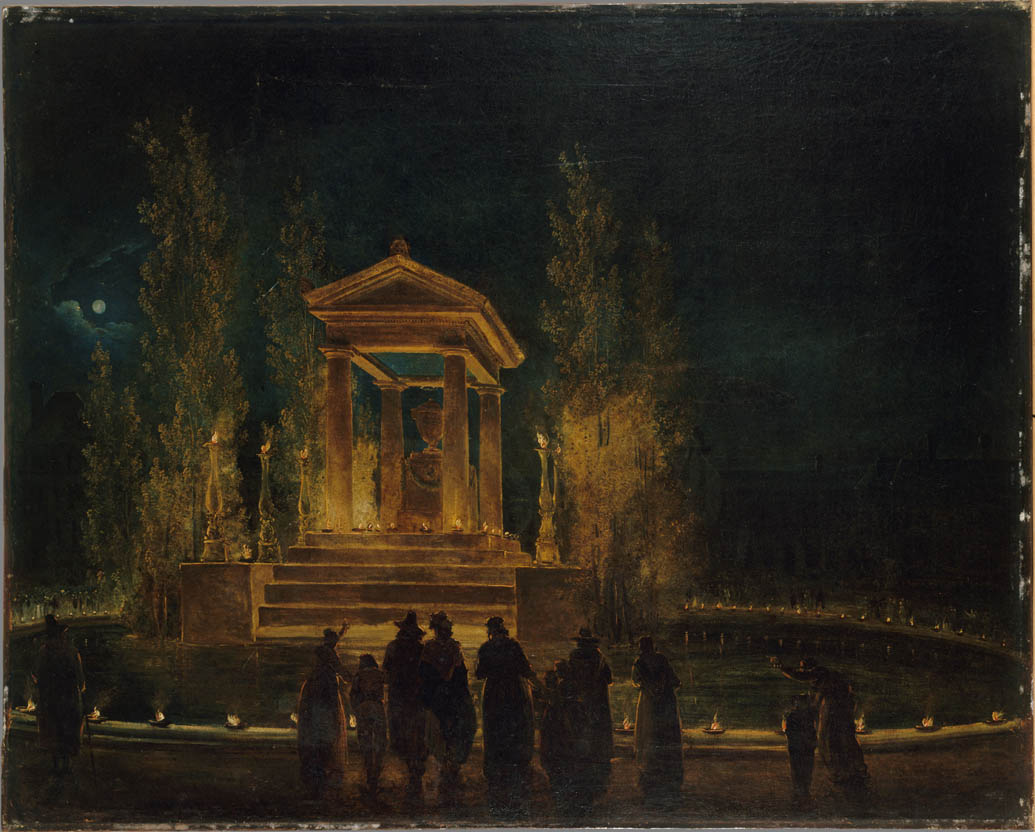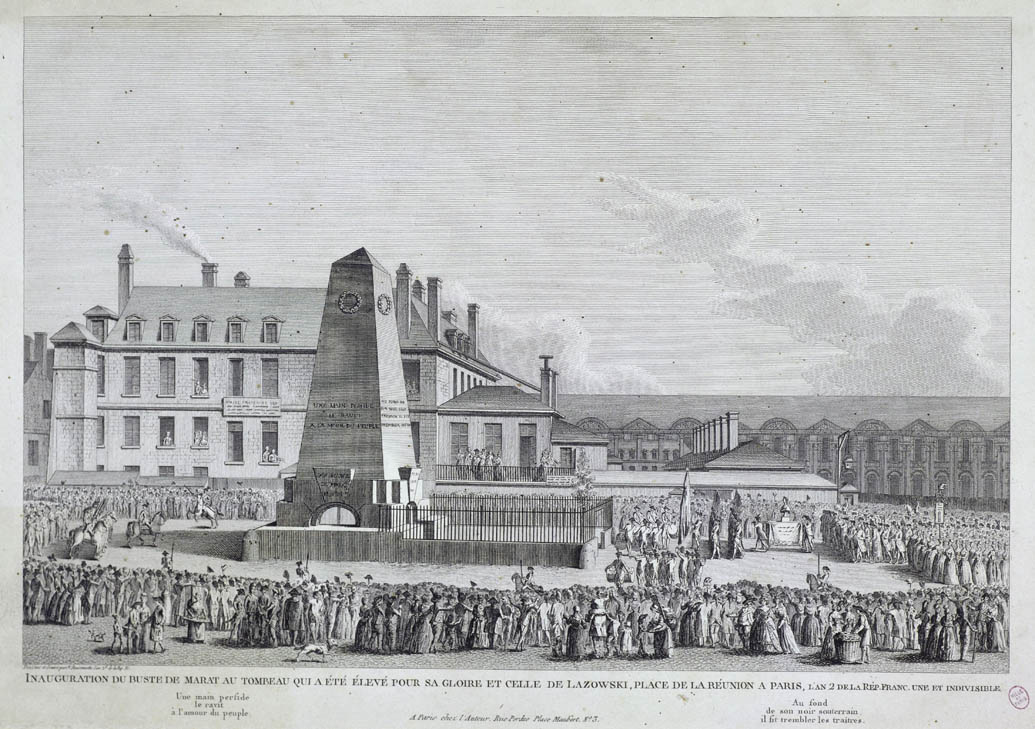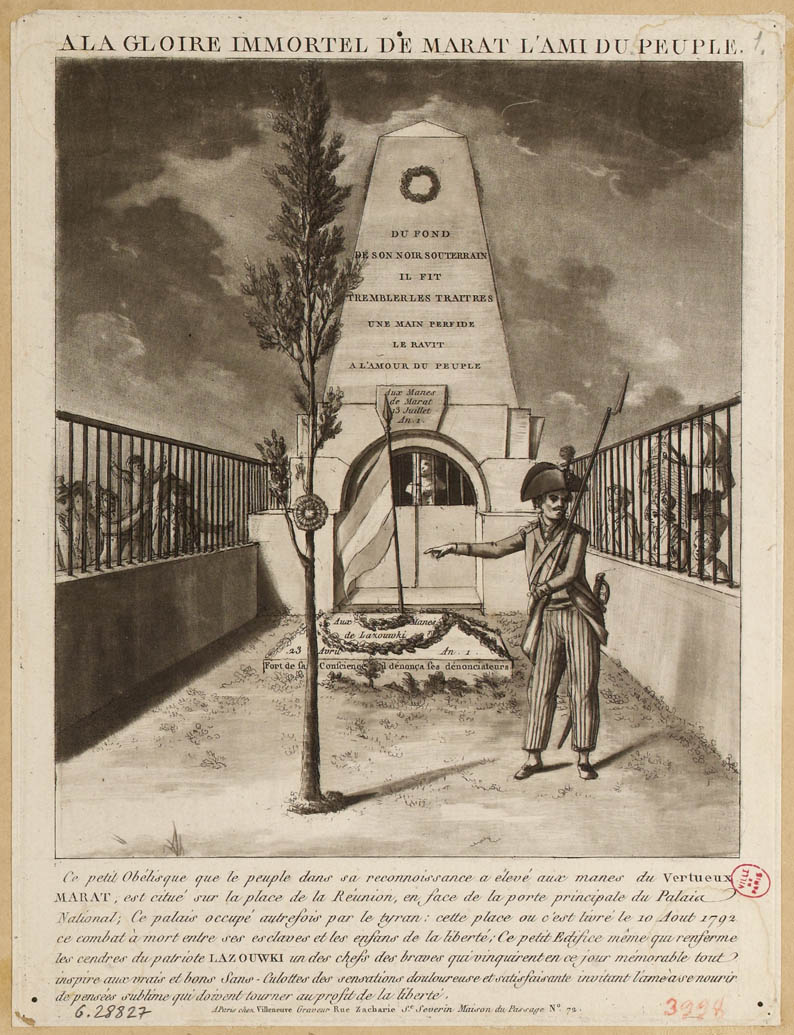The National Garden of the Tuileries
Created in the 16th century, the garden of the Tuileries palace was solely reserved for the royal family and its court. Then, in the 17th century, it was opened only for a privileged few. “Honest people” could be seen here amongst the statues that were gradually installed during the Enlightenment. With the French Revolution, attendance became democratized and in 1793 it became the “national garden”: a place where Parisians could get fresh air, as well as a site for celebrations and ceremonies.
Location
ItineraryEntrance to the Tuileries Gardens near the white marble exedra?
Suggestion
The Louvre and the Tuileries neighborhood
From the Palace of the Kings to the National Museum (the Louvre Museum)
To find out more…
Benches for the Festival of the Supreme Being (exedra in white marble near the Concorde entrance)
These semi-circular benches are the last vestiges of a rather curious revolutionary festival, which took place on June 8, 1794. On this day, the National Garden of the Tuileries hosted the Festival of the Supreme Being. An imposing statue of Atheism was burned in a roar of firecrackers and rockets created by the famous pyrotechnist Ruggieri. Participants then had to follow, up to the Champ-de-Mars, a great chariot pulled by four bulls, symbolizing the breadth of France’s arts, trades and goods. There, they proclaimed their faith in the Supreme Being and the immortality of the soul and took an oath to the Republic. The painter Jacques-Louis David had successfully staged Robespierre’s idea: establish a new Republican religion in order to create a closer bond between the French people and the Revolution
The most famous sans-culotte of his time: Claude Lazowski
What a turnaround for the Place du Carrousel! Today, dedicated to Napoléon Bonaparte, it was, during the Revolution, dedicated to two radical revolutionaries: Claude Lazowski being one of them. After having occupied certain roles under the Ancien Régime as a production inspector and an inhabitant of the rue Mouffetard, this man, with Polish ancestry, played a major role in the storming of the Tuileries. On April 28, 1793, he was given the right to a public funeral: his remains were buried where the fighting took place on August 10, 1792, under a tree of Liberty. A large pyramid was built on site. Three months later, in July 1793, it also received the ashes of the deputy and journalist Marat, who had just been assassinated.


